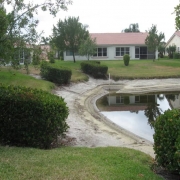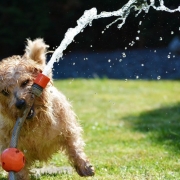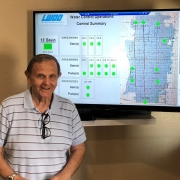LWDD Operations and Water Conservation
Florida is fortunate to receive over 50 inches of rainfall a year on average. Most of that amount is concentrated during the six-month rainy season (May through October). While some of the runoff from these rains is discharged to the ocean to avoid flooding, a significant amount soaks into the ground and recharges the freshwater aquifers that supply our drinking water wellfields, lakes, and wetlands.
For large populations of people to live safely in south Florida, a massive regional water management system is required to balance the water supply needs of urban areas and agriculture against the requirement to maintain flood protection. If we did not provide adequate drainage to the region, human health and safety would be jeopardized and extensive property damage could occur. Similarly, if regional groundwater levels were not properly maintained, wellfields would be unable to deliver water to our homes and businesses, or worse yet, the underground inland migration of salt water from the ocean could permanently contaminate the drinking water supply rendering it unsafe for potable uses.
Water conservation efforts by LWDD help mitigate some of the water supply issues our region experiences. The large network of LWDD canals plays a critical role in conservation by maintaining groundwater levels which in turn supports the water levels in lakes, ponds, and wetlands across the region. During dry periods, groundwater levels tend to slowly fall in response to low rain and high evaporation. When this occurs, water managers in the region look to large regional storage areas like the Water Conservation Areas in the Everglades or to Lake Okeechobee as a source of supplemental water. Water from these sources is released into the canal network to raise the level of water in the canals. This water in turn seeps through the sandy soils to recharge the groundwater and returns the water table to its normal elevation thus helping to protect drinking water supplies.
The LWDD’s efforts, to manage drainage canals at appropriate elevations to balance water supply needs and avoid ocean discharges when possible, plays a key role in comprehensive water conservation for South Florida.







